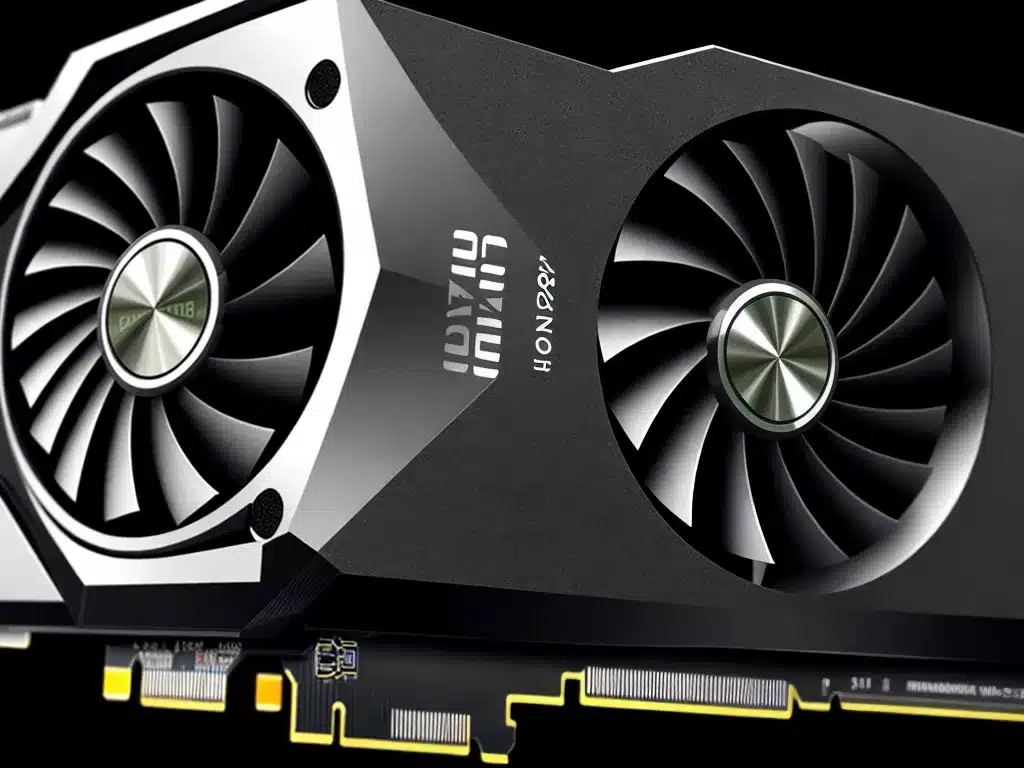Introduction
When building a new PC in 2024, one of the most important component choices is which brand of graphics card to go with – NVIDIA’s GeForce or AMD’s Radeon. I’ve used both brands extensively over the years, and each has their own strengths and weaknesses. Here I’ll compare and contrast GeForce and Radeon across a range of factors to help you decide which is best for your needs.
Performance
Raw Frame Rates
When it comes to raw gaming performance, NVIDIA’s GeForce RTX 40 series GPUs currently hold the lead over AMD’s Radeon RX 7000 cards in traditional rasterization and ray tracing. In most games at 1440p and 4K resolutions, the RTX 4080 can deliver around 10-15% higher average and 99th percentile frame rates compared to the RX 7900 XT.
The gap does narrow at 1080p resolutions where CPU limits come into play. But with the right processor, GeForce still has the edge. NVIDIA’s architectures and technologies like DLSS 3 give them superior performance.
Ray Tracing
For ray traced games, GeForce is far ahead. The dedicated RT cores and 3rd gen Tensor cores on NVIDIA’s Ampere and Ada Lovelace architectures mean their GPUs can handle ray traced effects much better than Radeon cards.
In titles with heavy ray tracing like Cyberpunk 2077, the GeForce RTX 4080 is around 70% faster than the RX 7900 XT when maxing out ray tracing settings. AMD is improving with ray tracing, but still lags behind.
Upscaling Technologies
NVIDIA also leads in upscaling tech that can boost frame rates. DLSS 3 on the RTX 40 series can sometimes double frame rates with minimal loss of image quality. AMD’s FSR 2 is good, but not quite on the same level based on my testing. These technologies are important for high refresh rate 1440p and 4K gaming.
Overclocking Headroom
When overclocked, both brands offer extra performance, but the GeForce RTX 40 series have more overclocking headroom. The RTX 4090 can easily hit 3GHz on the core with proper cooling, while even the RX 7900 XTX struggles to surpass 2.7GHz. This allows GeForce to extend its leads if you’re willing to overclock.
Features
Ray Tracing & DLSS
As mentioned above, NVIDIA has superior ray tracing performance and upscaling with DLSS. These are key features for modern games that AMD can’t yet match. NVIDIA also offers useful AI features like DLDSR and Frame Generation which have no equivalent in Radeon cards currently.
Encoders
NVIDIA’s NVENC encoder is far better than AMD’s equivalent for game streaming and recording. There is minimal performance hit with NVENC versus a big hit from AMD’s encoder. GeForce cards are the go-to for content creators for this reason.
Driver Quality
Here AMD has made big improvements, but NVIDIA still offers better day one driver support for new games in my experience. With Radeon, new game releases can sometimes have poor performance or issues out of the box. NVIDIA Game Ready drivers are more consistent.
Power and Thermals
AMD’s RDNA 3 architecture is based on a 5nm process and is extremely power efficient. The RX 7900 XTX draws around 300W less power than the RTX 4090 while matching or beating its raw performance. NVIDIA’s 4nm Ada Lovelace GPUs run extremely hot and power hungry.
For compact PCs or all-day gaming sessions, Radeon then may be the better choice to reduce noise and heat. But with proper cooling, this shouldn’t be an issue for most GeForce users.
Pricing and Value
With the RX 7900 series, AMD is competing with NVIDIA on pricing for the first time in years. The $899 RX 7900 XT undercuts the $1199 RTX 4080 16GB and performs similarly in traditional rendering. However, the GeForce still excels in ray tracing.
For budget builds, AMD’s RX 7700 XT also offers better value than NVIDIA’s RTX 4070 Ti in my opinion. But if money is no object, GeForce has the undisputed performance crown with the RTX 4090.
Game Support and Drivers
NVIDIA invests heavily in developer relations and sponsors many AAA game titles. As a result, GeForce cards sometimes have performance advantages or exclusive effects in certain games. AMD’s driver team is also still catching up to NVIDIA’s level of polish and day one game support.
So for the absolute best experience across the widest range of games, NVIDIA GeForce is the safest choice. But AMD Radeon GPUs work very well in most titles.
Brand Trust and Reputation
NVIDIA undoubtedly has a stronger brand reputation than AMD, especially among less tech-savvy gamers. Many just assume GeForce is better because it’s a more recognizable name. However, today’s Radeon GPUs absolutely go toe-to-toe with GeForce in many ways. AMD is rapidly improving mindshare with the success of the RX 7000 cards.
Current GPU Recommendations
GeForce RTX 4080
- Excellent 4K gaming performance
- Superb ray tracing and DLSS 3 capability
- Wide game support with mature drivers
Radeon RX 7900 XTX
- Blazing fast rasterization for the price
- Very power efficient and cool running
- Minimal ray tracing impact on AMD cards
Conclusion
Overall, GeForce RTX GPUs retain leadership in performance and features. Technologies like DLSS give them a leg up, and brand recognition remains strong. But AMD’s Radeon RX 7000 series has closed the gap significantly while running cooler and quieter.
Radeon offers outstanding value, especially for high resolution gaming without ray tracing. I don’t think there’s a wrong choice here. Pick GeForce for maximum performance and support. Go Radeon to maximize price/performance. Both are capable options that will provide an excellent gaming experience.













